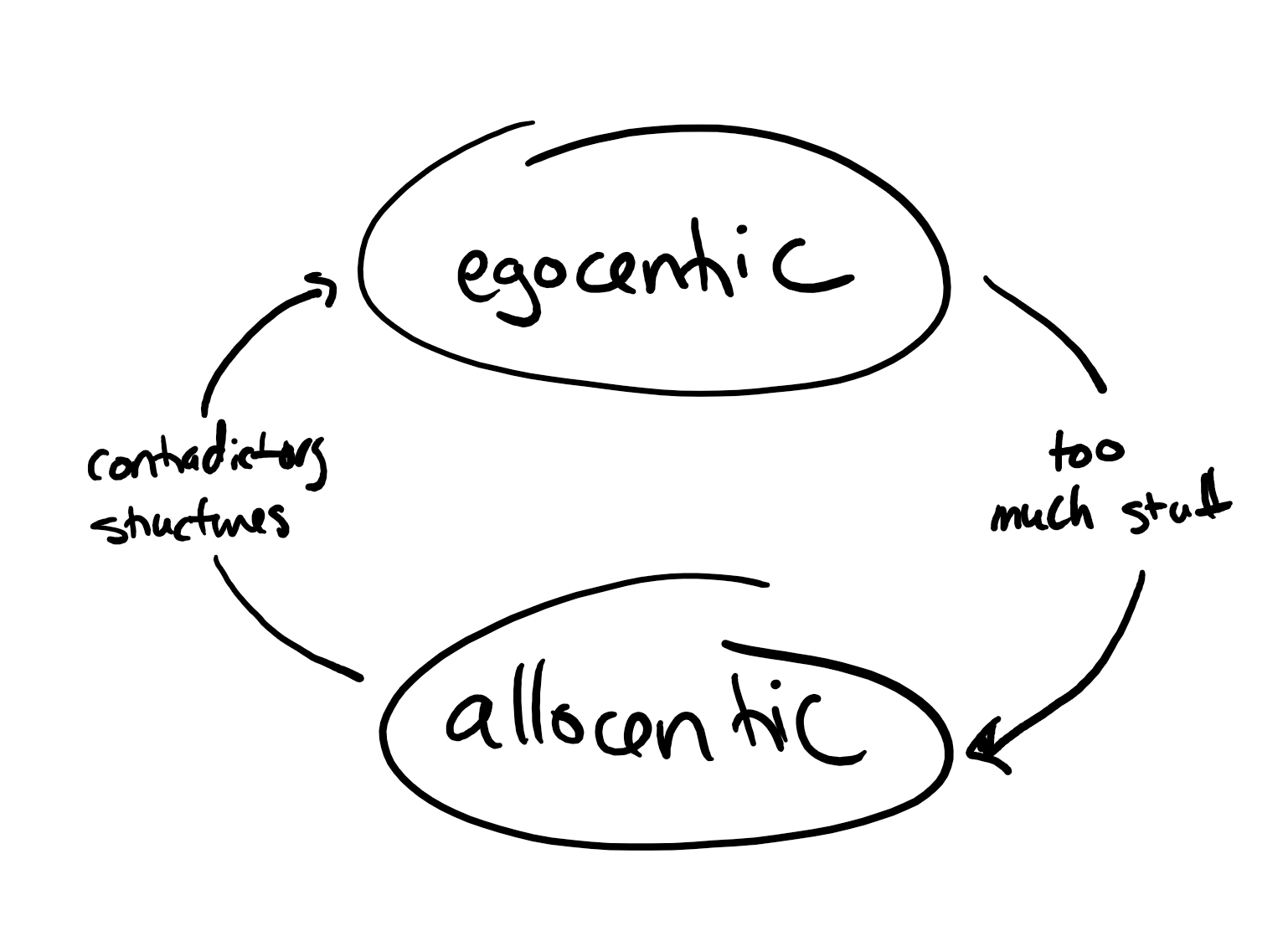Switching between reference systems
 Especially in a digital context, it’s possible for the cues an experience is giving you to conflict. When the brain gets too many confusing cues, that conflict makes it harder for your brain to decide what an experience is and thus makes it harder to remember and reason against. There’s evidence to suggest that we can’t compromise or combine elements of these two reference systems, we just switch when forced to.
Especially in a digital context, it’s possible for the cues an experience is giving you to conflict. When the brain gets too many confusing cues, that conflict makes it harder for your brain to decide what an experience is and thus makes it harder to remember and reason against. There’s evidence to suggest that we can’t compromise or combine elements of these two reference systems, we just switch when forced to.
The egocentric is our default, but it’s very limited in our ability to reason against it. When it gets overwhelmed, the brain attempts to switch back to an allocentric reference system to make sense of the breadth of information coming in.
References
Burgess, Neil. “Spatial Memory: How Egocentric and Allocentric Combine.” Trends in Cognitive Sciences, vol. 10, no. 12, Dec. 2006, pp. 551–57.
Maintaining an egocentric representation gets harder as distances and # of objects increases, lots of relative information to keep track of as opposed to only a moving dot on a map. p. 4
When you get disoriented, you switch from one frame of reference to the other. p, 4
Geometry may be more useful as scale increases. The number and consistency of cues is also important (we don’t use them if they’re inconsistent) p.5
Errors kick in at a certain degree of rotation, indicating that systems switch, they don’t compromise p. 5
Kelly, Jonathan W., and Timothy P. McNamara. “Spatial Memories of Virtual Environments: How Egocentric Experience, Intrinsic Structure, and Extrinsic Structure Interact.” Psychonomic Bulletin & Review, vol. 15, no. 2, Apr. 2008, pp. 322–27.
It’s important for all the extrinsic structures to be congruent with each other. When they’re not congruent, we ignore them or have to resort to egocentric maps. p. 8-9
Notes mentioning this note
Many difficult digital experiences are difficult because they haven’t decided whether they are tabletops or landscapes, but [[Switching between reference...
We have two different reference systems to use to understand spaces: one that tracks objects relative to our own bodies...